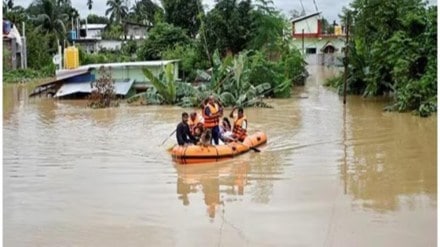The recent floods in Bangladesh have caused significant concern, and some reports have linked the disaster to the operations of the Farakka Barrage in India. The Indian government has responded promptly to these allegations, clarifying the role of the barrage and addressing the spread of misinformation.
The Official Spokesperson for the Ministry of External Affairs, Randhir Jaiswal, issued a statement highlighting that the opening of the Farakka Barrage gates is a routine, seasonal action necessitated by natural factors. Heavy rainfall in the catchment areas of the Ganga river basin upstream leads to an increased inflow of water, which must be managed carefully to prevent flooding and other risks. Jaiswal pointed out that the Farakka Barrage is not a dam but a barrage, a structure designed to regulate water flow rather than to store water. The barrage diverts 40,000 cusecs of water into the Farakka canal, while the remaining water continues to flow downstream into the Ganga/Padma River, eventually reaching Bangladesh.
The Indian government has taken steps to ensure transparency and cooperation with Bangladesh in managing the shared river systems. According to Jaiswal, data regarding the water flow is regularly shared with Bangladeshi authorities through the Joint River Commission, a body established to manage the shared water resources between the two nations. This data sharing is done on a regular and timely basis, ensuring that both countries are well-informed and can take appropriate measures to address the seasonal changes in river flow.
In response to the current situation, he also addressed the issue of misinformation spreading through social media. And noted that fake videos, rumours, and fear-mongering have been used to create misunderstandings about the role of the Farakka Barrage in the floods. He urged the public and the media to counter these false narratives with facts, emphasizing that the floods in Bangladesh are primarily the result of natural seasonal factors rather than any deliberate actions by India.
India’s response to the situation highlights the importance of accurate communication and strong bilateral cooperation in addressing shared challenges.
